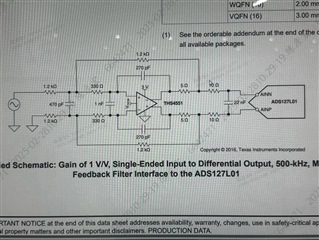Tool/software:
The calculation for a single-ended MFB circuit can be referenced via this link: sim.okawa-denshi.jp/.../Fkeisan.htm
However, for a differential MFB circuit like the picture shown below, how should the cutoff frequency be calculated? Could you provide the calculation formula?
Also, how can simulation be used to quickly verify whether the calculation is correct?


